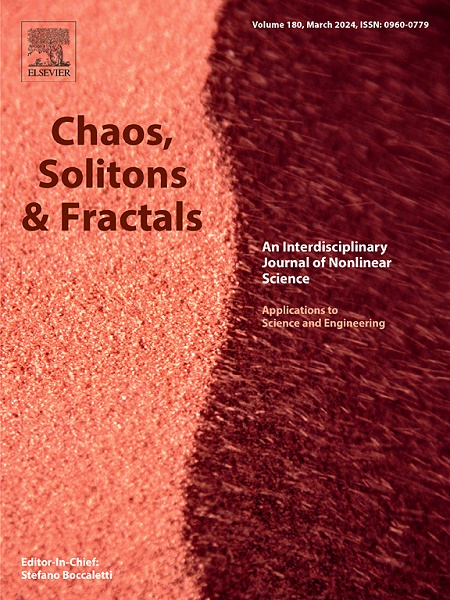具有不同相位滞后阶数的高阶Kuramoto振荡器系统同步跃迁分析
IF 5.6
1区 数学
Q1 MATHEMATICS, INTERDISCIPLINARY APPLICATIONS
引用次数: 0
摘要
相位滞后在各种复杂系统的建模和理解中起着至关重要的作用。在本工作中,在Kuramoto振荡器系统中引入了作用于不同耦合阶数的两个相位滞后。在低维模型的基础上,理论分析准确地揭示了增加与双耦合相关的相位滞后不会改变同步跃迁模式,但会使鞍节点和亚临界分岔点发生位移。此外,它还会导致爆炸同步过程中迟滞宽度的扩大。相反,增加与2-单纯工耦合相关的相位滞后会逐渐减小迟滞宽度,直到系统呈现连续的同步过渡。这些结论在两个经验网络中也得到了验证,平均2-单纯度越高的网络越容易引发爆炸同步性和更宽的滞后区域。本文章由计算机程序翻译,如有差异,请以英文原文为准。
Analysis of synchronization transitions in higher-order Kuramoto oscillator system with different orders of phase lags
Phase lag plays a crucial role in the modeling and understanding of various complex systems. In this work, two phase lags acting on different orders of coupling are introduced in Kuramoto oscillator system. Based on a low-dimensional model, theoretical analysis precisely reveals that increasing the phase lag associated with the pairwise coupling does not alter the synchronization transition mode but shifts both the saddle-node and subcritical bifurcation points. Moreover, it leads to an expansion of the hysteresis width during explosive synchronization. In contrast, increasing the phase lag related to the 2-simplex coupling progressively reduces the hysteresis width until the system exhibits a continuous synchronization transition. These conclusions are also verified in two empirical networks, where a network with higher average 2-simplex degree is more likely to induce explosive synchronization and wider hysteresis region.
求助全文
通过发布文献求助,成功后即可免费获取论文全文。
去求助
来源期刊

Chaos Solitons & Fractals
物理-数学跨学科应用
CiteScore
13.20
自引率
10.30%
发文量
1087
审稿时长
9 months
期刊介绍:
Chaos, Solitons & Fractals strives to establish itself as a premier journal in the interdisciplinary realm of Nonlinear Science, Non-equilibrium, and Complex Phenomena. It welcomes submissions covering a broad spectrum of topics within this field, including dynamics, non-equilibrium processes in physics, chemistry, and geophysics, complex matter and networks, mathematical models, computational biology, applications to quantum and mesoscopic phenomena, fluctuations and random processes, self-organization, and social phenomena.
 求助内容:
求助内容: 应助结果提醒方式:
应助结果提醒方式:


